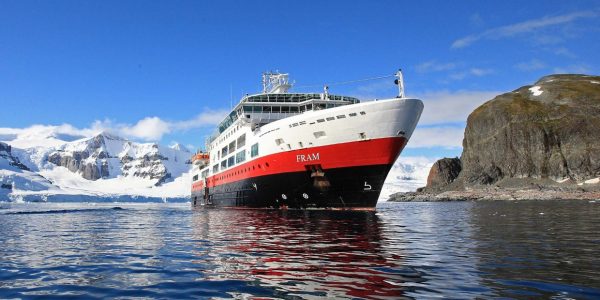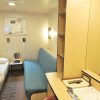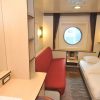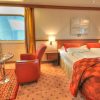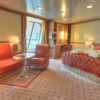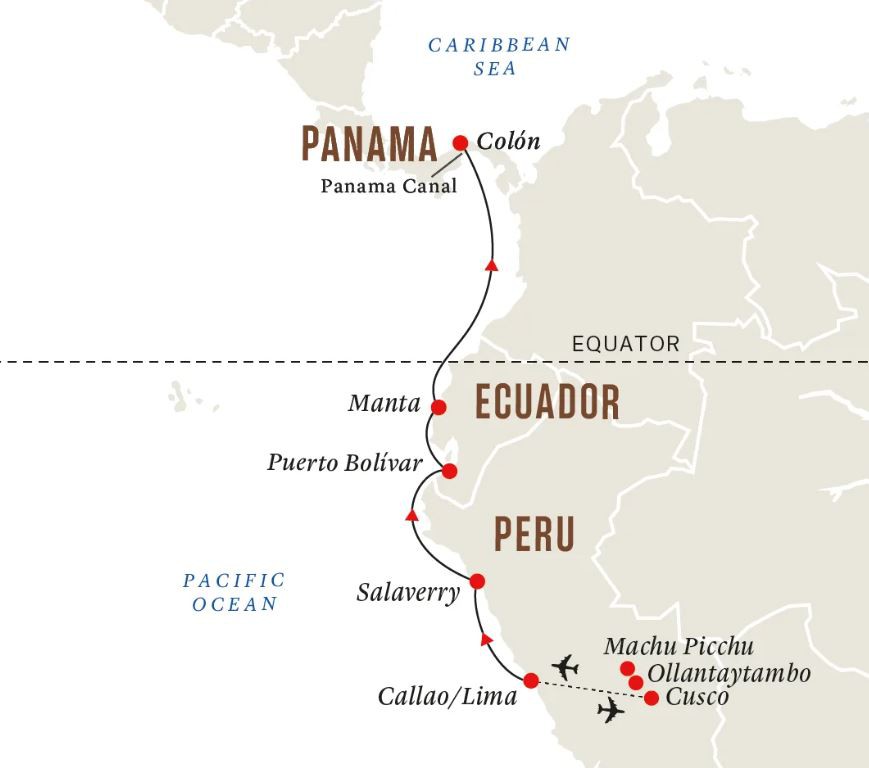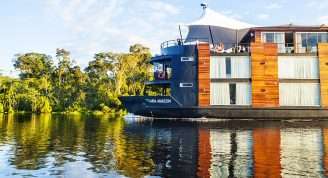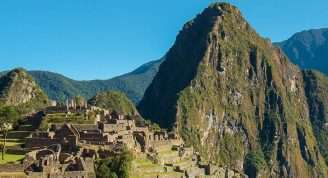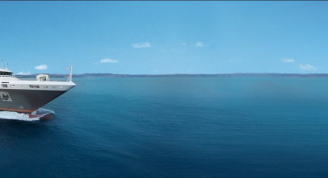Description
Inca-mysteries
After a night enjoying the many charms of Lima, you’ll fly to Cusco and visit the fortress of Sacsayhuamán on a hill overlooking the former Inca capital. You’ll also go to another impressive fortress at Ollantaytambo before boarding the Belmond Hiram Bingham train that takes you up to ‘The Lost City’ of Machu Picchu. There’ll be time to to see more of Cusco including its cathedral and convent, built on top of an Incan palace and temple.
Peruvian sites, Ecuadorian paradises and the legendary Panama Canal
You will board the ship in Lima, and start our expedition along the coast of Peru calling at Salaverry to tour the ancient temple and city ruins around Trujillo. We’ll stop at the important Ecuadorian port of Puerto Bolivar to learn about the oro verde – green gold. Then continue northbound to the busy and prosperous town port of Manta, cross the line of the Equator, and sail to the isthmus of Panama. Crossing from the Pacific Ocean to the Caribbean Sea, in the Atlantic side of the Canal, will be the great finishing touch pf your voyage.


